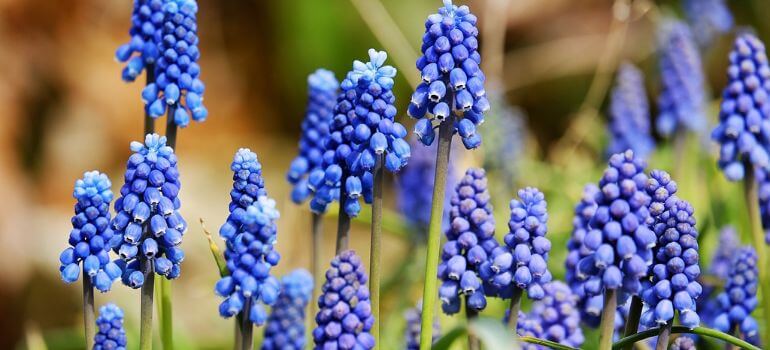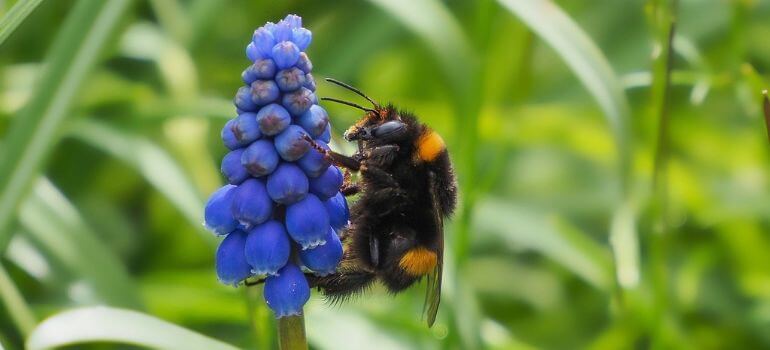Gardening enthusiasts often find themselves torn between choices, especially when it comes to selecting from a plethora of beautiful blooms. In this comparison, we dive into the world of Grape Hyacinth and Hyacinth, two captivating plants that grace gardens with their presence. Let’s explore the nuances that differentiate these floral wonders.
Introduction
Grape Hyacinth and Hyacinth, though sharing a common association with flowers, present distinct characteristics that appeal to various gardening preferences. Whether you’re a seasoned horticulturist or a novice in the gardening realm, understanding the unique traits of each plant is crucial for making informed choices in your garden.
Appearance and Growth
Grape Hyacinth: A Jewel-Like Elegance
Grape Hyacinths, scientifically known as Muscari, are characterized by their small, grape-like clusters of flowers. These beauties boast a range of colors, from deep purples to soft blues and whites. Their low-growing nature makes them perfect for ground cover, adding a touch of elegance to garden borders.
Hyacinth: Towering Beauty in Varied Hues
In contrast, the traditional Hyacinth, belonging to the genus Hyacinthus, stands tall with a single spike adorned with densely packed, fragrant flowers. The blooms come in a spectrum of colors, and their vertical growth adds a striking visual element to any garden.
Botanical Distinctions
To the discerning eye, botanical differences between Grape Hyacinth and Hyacinth become apparent. Grape Hyacinth belongs to the Liliaceae family, while Hyacinth is a member of the Asparagaceae family. These distinctions extend to their flower structures, bulb shapes, and overall growth habits, influencing cultivation practices.
Environmental Preferences
Grape Hyacinth: Versatility in Adapting
Grape Hyacinths exhibit a remarkable adaptability to various soil conditions and climates. They thrive in well-drained soil and can withstand both full sun and partial shade, making them versatile additions to diverse garden settings.
Hyacinth: Preferring Chilled Winters

Hyacinths, on the other hand, have a preference for chilly winters. They require a period of cold dormancy for successful flowering. This makes them well-suited for gardens in temperate climates where winters provide the necessary chilling period.
Popular Varieties
Grape Hyacinth: Muscari Marvels
Muscari includes popular varieties such as Muscari armeniacum (Armenian Grape Hyacinth) and Muscari botryoides (Common Grape Hyacinth), each offering unique color variations and growth habits.
Hyacinth: Diverse Cultivars
Hyacinth enthusiasts can choose from an array of cultivars, including ‘Blue Jacket,’ ‘Pink Surprise,’ and ‘Jan Bos.’ These cultivars showcase the diversity within the Hyacinth genus, catering to different aesthetic preferences.
Planting and Care Tips
Grape Hyacinth: Simple Elegance
Planting Grape Hyacinths is a straightforward process. These bulbs can be planted in the fall at a depth of around 3 inches. They require minimal care, making them an excellent choice for busy gardeners seeking simple yet elegant additions to their landscape.
Hyacinth: Cold Beauty
Hyacinths demand a bit more attention. Plant the bulbs in the fall, ensuring they experience a chilling period. Adequate sun exposure and well-draining soil are crucial. Regular watering and fertilization contribute to their robust growth.
Seasonal Blooms
Grape Hyacinth: Early Spring Delight
Grape Hyacinths usher in spring with their early blooms. The jewel-like clusters emerge in late winter to early spring, creating a vibrant carpet of color that complements the awakening garden.
Hyacinth: A Springtime Symphony
Hyacinths, true to their name, bloom in spring, filling the air with a delightful fragrance. Their vertical spikes adorned with tightly packed flowers create a symphony of colors, heralding the arrival of the warmer months.
Landscaping Uses
Grape Hyacinth: Ground Cover Extravaganza
The low-growing nature of Grape Hyacinths makes them ideal for ground cover. They excel in borders, rock gardens, and under deciduous trees, adding a touch of sophistication to any landscape.
Hyacinth: Striking Vertical Accents
Hyacinths, with their towering spikes, serve as striking vertical accents. Plant them in groups or along pathways to create a visual impact. They also make stunning additions to flower beds and containers.
Fragrance and Aroma
Grape Hyacinth: Subtle Sweetness
While Grape Hyacinths may not boast an overpowering fragrance, they emit a subtle, sweet scent that adds a delicate aroma to the air. This makes them suitable for gardens where a gentle fragrance is preferred.
Hyacinth: Potent Perfume
Hyacinths, on the other hand, are renowned for their potent perfume. The intoxicating fragrance fills the air, making them a popular choice for those seeking a garden that engages the senses.
Culinary and Medicinal Uses
Grape Hyacinth and Hyacinth, though primarily ornamental, have limited culinary and medicinal applications. In some cultures, certain parts of these plants have been used for culinary purposes or traditional remedies. However, caution is advised, as not all parts are edible or safe for medicinal use.
Challenges in Cultivation
Both Grape Hyacinth and Hyacinth come with their set of challenges. Common issues include fungal diseases, bulb rot, and pest infestations. Adequate care, proper spacing, and timely interventions are essential to overcome these challenges and ensure healthy plant growth.
Symbolic Meanings
The symbolic meanings associated with Grape Hyacinth and Hyacinth vary across cultures. Grape Hyacinths are often linked to sincerity and constancy, while Hyacinths symbolize playfulness, sport, and deep emotions. Understanding these meanings adds an extra layer of significance to these floral gems.
Comparing Popularity
In contemporary gardening trends, the popularity of Grape Hyacinth and Hyacinth fluctuates. Factors such as ease of cultivation, visual appeal, and fragrance contribute to their respective followings. Gardeners often choose based on personal preferences and the overall aesthetic they aim to achieve.
Unique Characteristics
Unveiling the uniqueness of Grape Hyacinth and Hyacinth is a journey into the diversity of the botanical world. From the compact elegance of Grape Hyacinths to the towering beauty of Hyacinths, each plant brings something special to the garden, appealing to different tastes and styles.
Conclusion
In the realm of Grape Hyacinth vs. Hyacinth, there is no clear winner—only choices that reflect personal gardening preferences. Whether you opt for the subtle charm of Grape Hyacinth or the bold beauty of Hyacinth, both plants promise to enhance your garden with their distinct features and seasonal allure.
Frequently Asked Questions (FAQs)
Yes, you can plant them together, but ensure they have compatible light and soil requirements.
Both plants attract pollinators such as bees, making them beneficial for garden ecosystems.
Ensure well-draining soil, proper spacing, and avoid overwatering to prevent bulb rot.
Yes, the small size and delicate blooms make Grape Hyacinths suitable for indoor flower arrangements.
While they are perennial, some gardeners choose to replant Hyacinths for optimal bloom.




